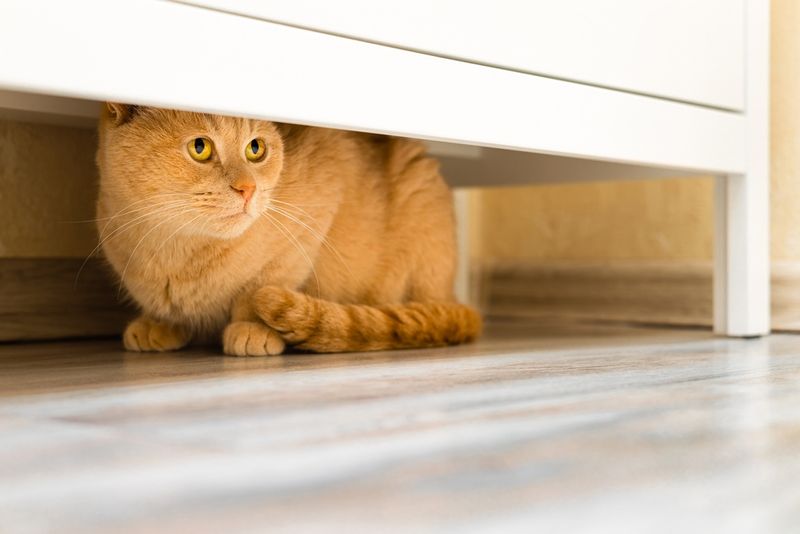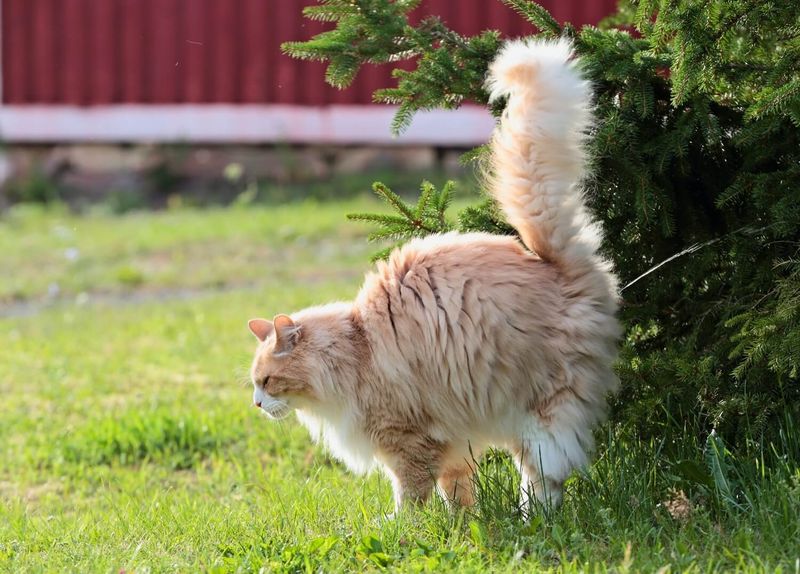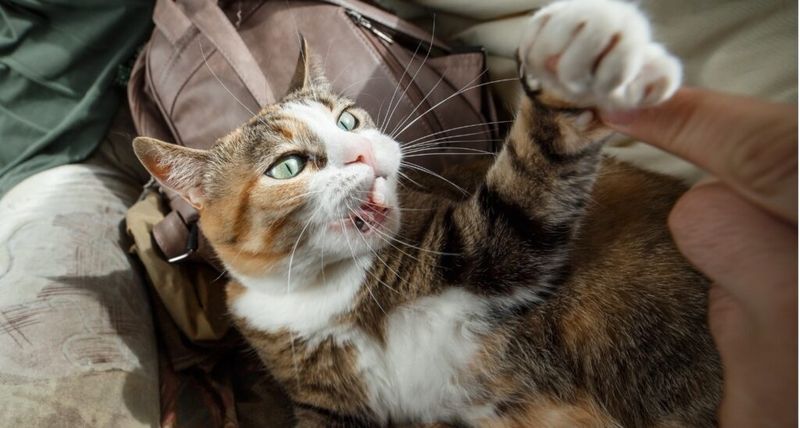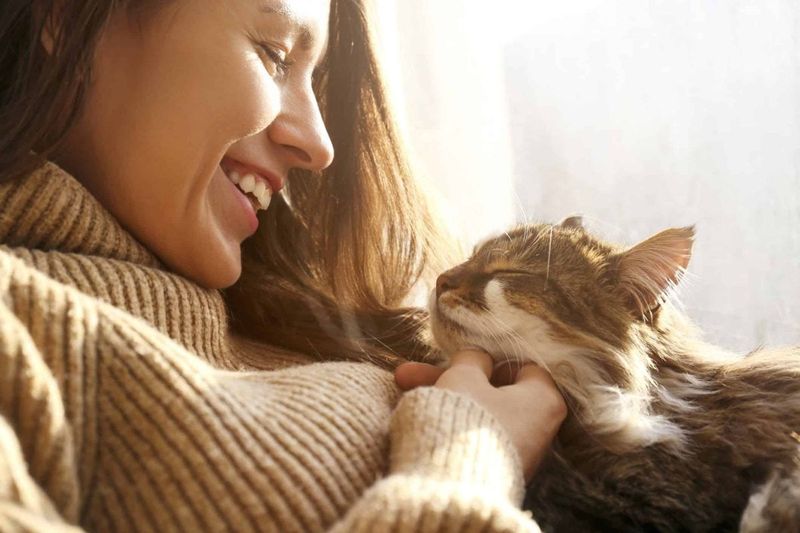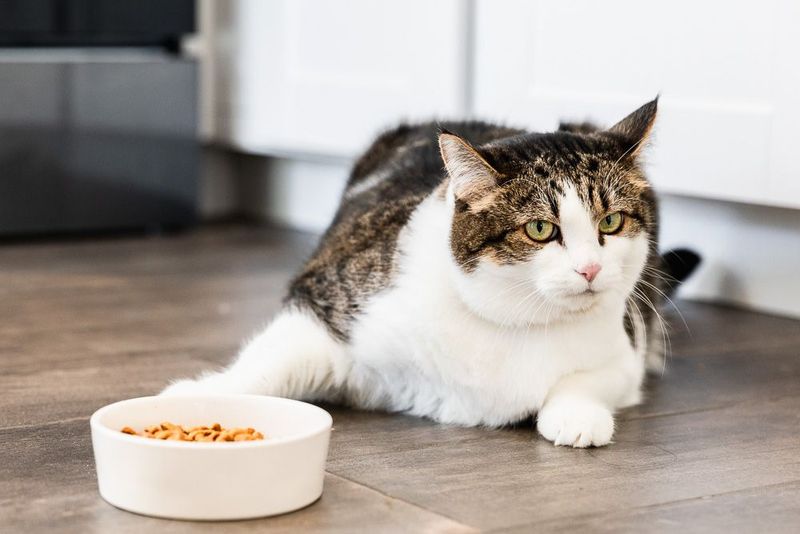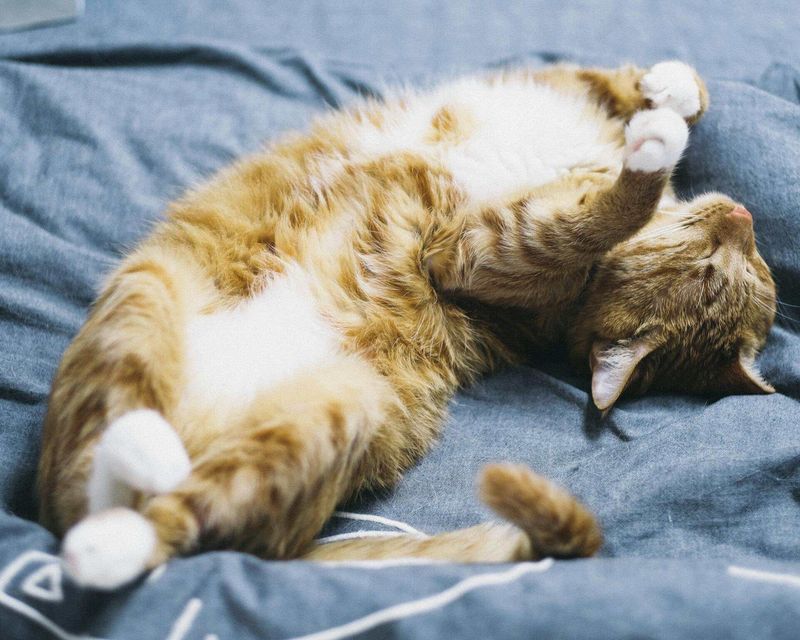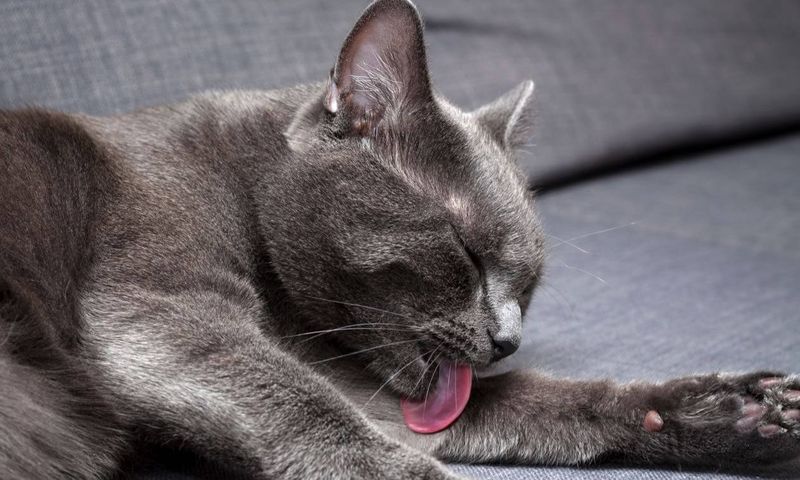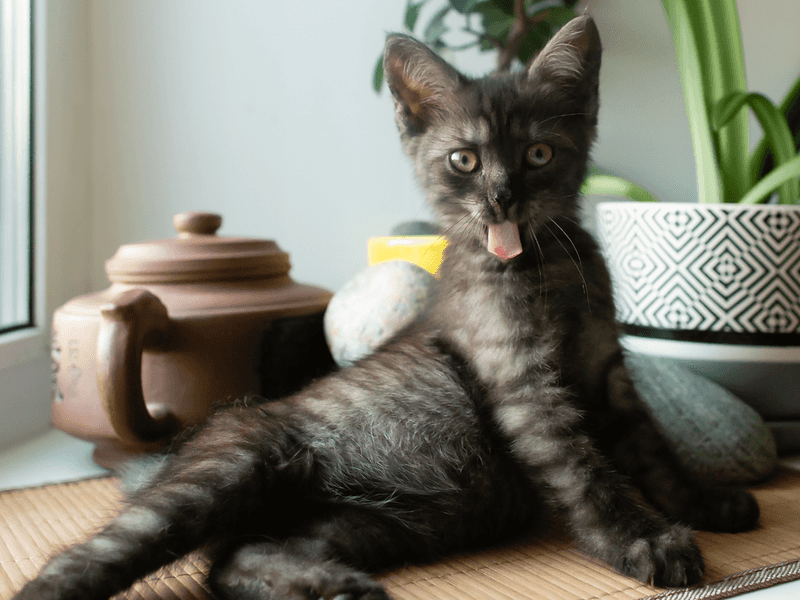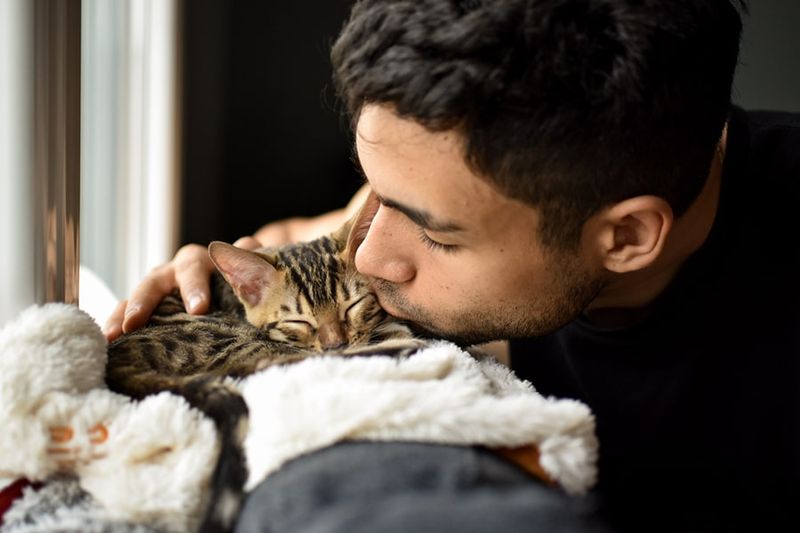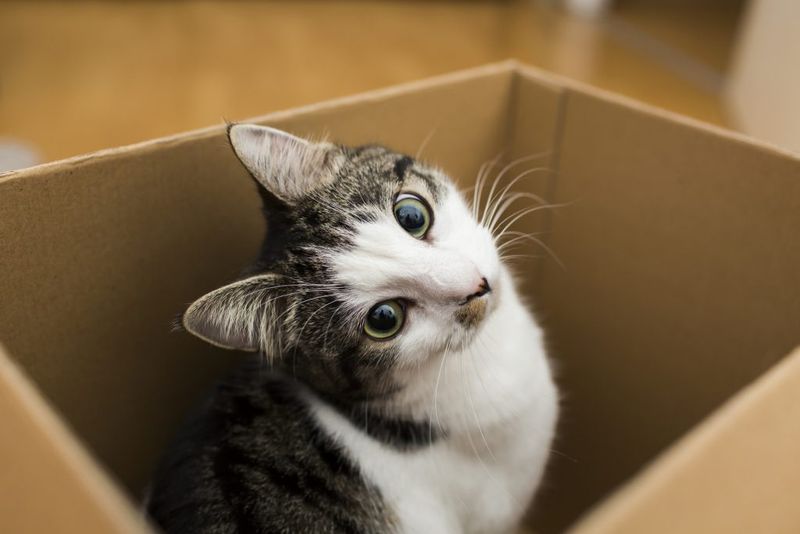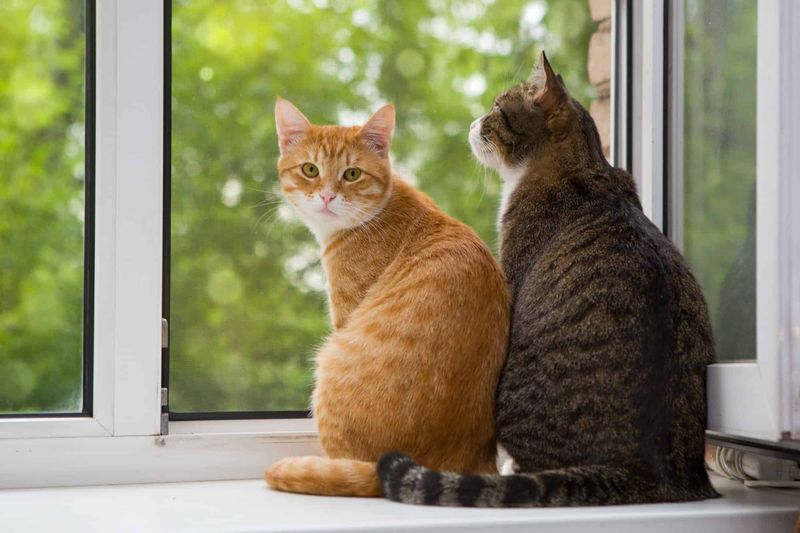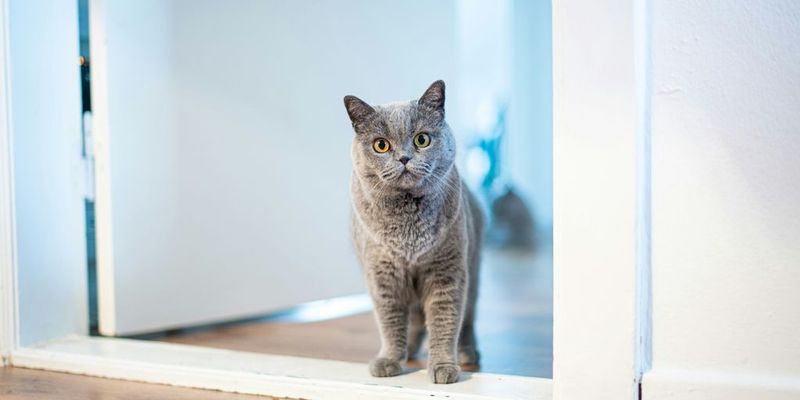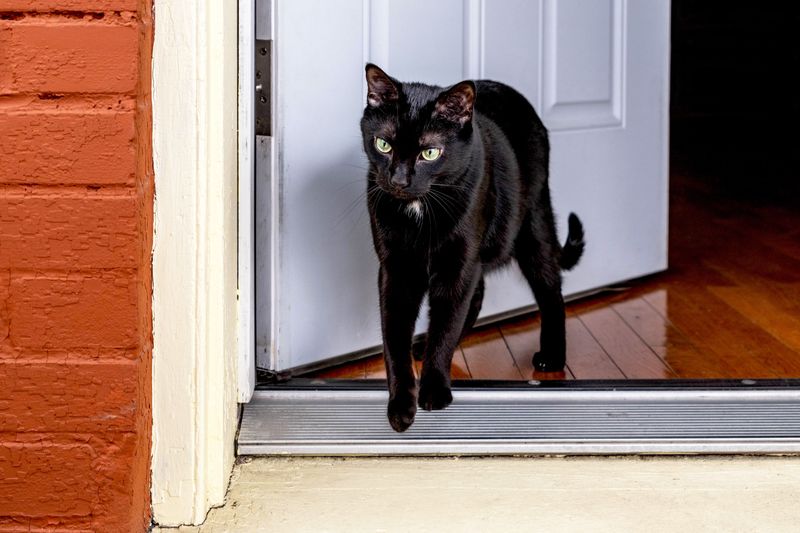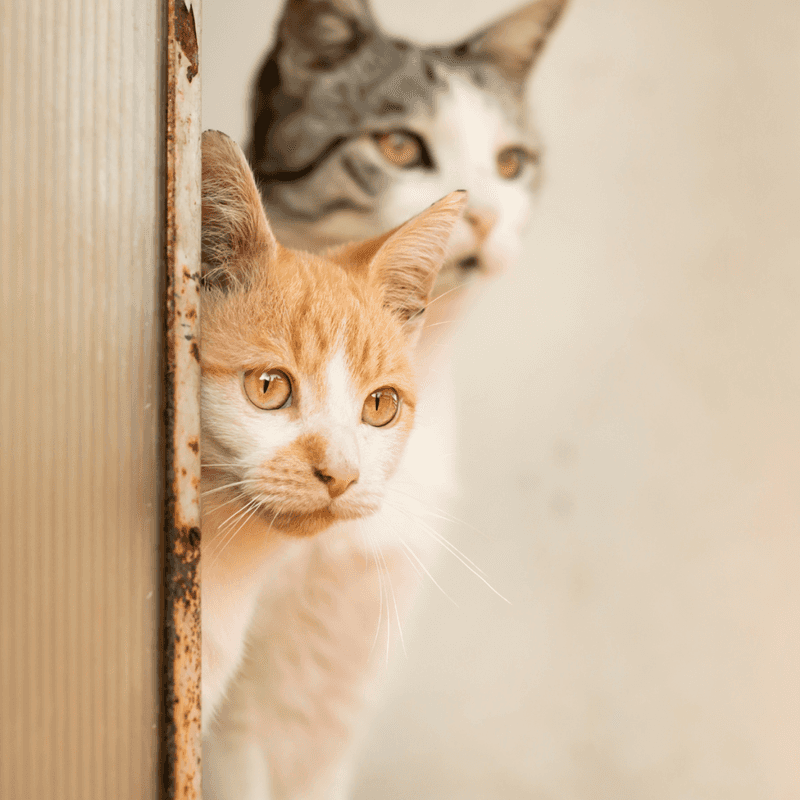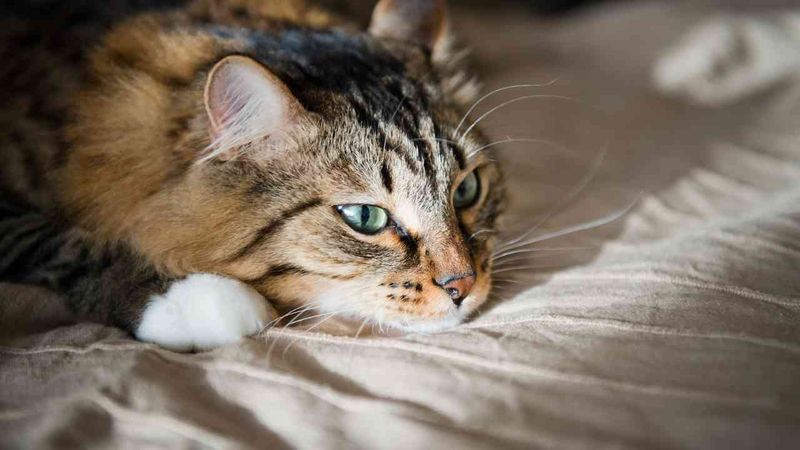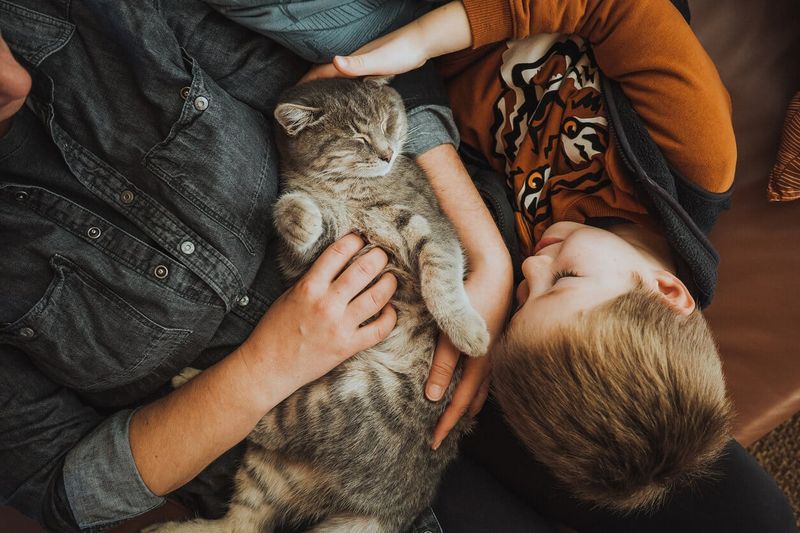📖 Table of Content:
- 1. Heightened Anxiety
- 2. Territorial Insecurity
- 3. Temporary Regression
- 4. Trust Reset
- 5. Appetite Fluctuations
- 6. Sleep Pattern Disruption
- 7. Hypervigilance
- 8. Grooming Changes
- 9. Personality Shifts
- 10. Comfort Seeking
- 11. Altered Play Drive
- 12. Window Fixation
- 13. Scent Obsession
- 14. Door Darting Tendencies
- 15. Vocalization Changes
- 16. Boundary Testing
- 17. Grief Responses
- 18. Renewed Bonding Opportunities
Moving to a new home can be tough on everyone, especially our feline friends. Cats are creatures of habit who form deep connections with their territories. When that familiar space suddenly changes, they experience a range of emotional shifts that can affect their behavior. Understanding these changes helps you support your cat during this challenging transition.
1. Heightened Anxiety
The unfamiliar sights, sounds, and smells of a new home often trigger anxiety in cats. Your normally confident companion might hide under furniture or stay in one room for days.
Cats express this anxiety through behaviors like excessive grooming, reduced appetite, or unusual vocalization. Their whiskers may be pulled forward and ears flattened against their heads.
Providing a quiet, secure space with familiar items can help ease this initial anxiety. A cat bed or blanket with their scent works wonders during the adjustment period.
2. Territorial Insecurity
Cats suddenly lose their established territory when moving homes. The carefully marked boundaries and familiar scent markers disappear, leaving them feeling vulnerable and ungrounded.
You might notice your cat rubbing against furniture corners, doorways, and walls more frequently than usual. This behavior helps them establish new scent markers and begin claiming the space as their own.
Some cats patrol the new home’s perimeter repeatedly, memorizing escape routes and safe spots. This security mapping is an essential part of rebuilding their territorial confidence.
3. Temporary Regression
Moving stress can cause well-trained cats to temporarily forget litter box habits. This regression isn’t spite—it’s a response to feeling unsettled in unfamiliar surroundings.
Your previously independent cat might suddenly follow you everywhere, seeking reassurance through constant proximity. Some cats revert to kittenish behaviors like excessive meowing or neediness.
Patience is crucial during this regression phase. Reinforcing basic routines and providing extra affection helps cats regain their confidence and normal behaviors as they adjust to their new environment.
4. Trust Reset
Many cats experience a trust reset after moving. Even the strongest human-cat bonds can temporarily weaken during this transition period. Your normally affectionate cat might seem standoffish or skeptical of your intentions.
Physical signs include maintaining greater personal space, watching you from a distance, or flinching during previously welcomed petting sessions. Some cats will test boundaries by scratching furniture or displaying minor acts of defiance.
Rebuilding trust requires consistency and respect for their space. Let your cat approach you on their terms while maintaining feeding schedules and play routines they can count on.
5. Appetite Fluctuations
Food refusal or reduced appetite commonly occurs during the first days in a new home. The stress of relocation affects a cat’s digestive system and interest in eating. Some cats may go 24-48 hours eating very little.
Conversely, certain cats develop stress-eating behaviors, consuming food rapidly whenever it’s available. This stems from insecurity about resource availability in the new environment.
Maintaining consistent feeding times and locations helps stabilize eating patterns. Offering especially enticing foods can encourage reluctant eaters, while puzzle feeders help slow down stress-eaters during this adjustment period.
6. Sleep Pattern Disruption
The move disrupts your cat’s carefully established sleep schedule. Unfamiliar noises and surroundings keep them alert when they would normally rest deeply. Many cats become light sleepers, startling at the smallest sounds.
Nighttime restlessness often manifests as increased activity when humans are trying to sleep. Your cat might pace, vocalize, or engage in play behaviors during overnight hours.
Creating a designated sleeping area with familiar bedding helps restore normal patterns. Maintaining consistent bedtimes and incorporating evening play sessions helps tire them out naturally, gradually resetting their internal sleep clock.
7. Hypervigilance
Cats often develop a state of hypervigilance after moving homes. Every new sound—from creaking floorboards to distant traffic—becomes cause for intense alertness. Their pupils dilate, ears constantly rotate, and whiskers extend forward to process all environmental information.
This heightened state of awareness is exhausting for cats but represents their natural survival mechanism in unfamiliar territory. Some cats station themselves at windows or doorways for hours, monitoring potential threats.
Creating predictable sound patterns helps reduce this vigilance. Playing soft music, maintaining regular household sounds, and minimizing startling noises helps your cat learn which environmental cues can safely be ignored.
8. Grooming Changes
Stress from moving often affects grooming behaviors. Some cats groom excessively until bald patches appear, especially on bellies or legs. This over-grooming releases endorphins that temporarily soothe anxiety.
Other cats neglect grooming entirely. Their coats become dull and unkempt as they focus emotional energy on adapting to their new surroundings instead of self-care.
Gentle brushing sessions create bonding opportunities while helping maintain coat health during this transition. If extreme grooming changes persist beyond a few weeks, consult your veterinarian as intervention may be needed to prevent skin issues or matting.
9. Personality Shifts
Your outgoing, social cat might temporarily become shy and withdrawn after moving. Conversely, a typically reserved cat might become unusually vocal or demanding. These personality shifts reflect their emotional processing of environmental change.
The familiar dynamics between multiple household cats often change too. Previously bonded cats might squabble as they renegotiate their relationship in the new space.
Most cats return to their true personalities within 1-3 months as they settle in. Supporting their core traits during transition helps—giving social cats extra interaction and shy cats plenty of quiet hideaways speeds their return to emotional equilibrium.
10. Comfort Seeking
Relocated cats often develop strong attachments to specific comfort objects. A previously ignored toy or blanket might suddenly become a prized possession that your cat carries around or sleeps with constantly.
Many cats seek out small, enclosed spaces that create a sense of security. Cardboard boxes, closets, or spaces under furniture become retreats where they can process their emotions safely. Some cats create “nests” by gathering favorite items in these secure locations.
Supporting this natural coping mechanism by providing hideaways and comfort items helps your cat self-regulate their stress levels. Their dependency on these objects typically decreases as their overall security increases.
11. Altered Play Drive
The emotional impact of moving often affects a cat’s interest in play. Some cats temporarily lose all playfulness, ignoring favorite toys as they focus on security concerns. The natural hunting instincts take a backseat to survival instincts.
Other cats display increased play aggression, pouncing more forcefully or engaging in rougher play than before. This represents displaced energy from stress and uncertainty about their new territory.
Short, gentle play sessions with interactive toys help restore healthy play patterns. Following play with treats or meals creates positive associations with the new environment while helping rebuild normal play behaviors.
12. Window Fixation
Many cats develop an intense fascination with windows after moving. This behavior represents their need to understand the outdoor territory surrounding their new home. Hours spent watching birds, passing cars, or neighborhood activities help them build a mental map of their extended territory.
Creating accessible window perches encourages this natural behavior. The visual stimulation provides enrichment while they’re still adjusting to indoor spaces.
Some cats vocalize at windows more frequently in new homes, especially if they spot neighborhood cats. This territorial response helps them establish boundaries even when confined indoors during the settling-in period.
13. Scent Obsession
After a move, cats become highly tuned into smells. They’ll sniff around to examine lingering scents left by former humans or animals, using this information to understand their new surroundings.
Your cat might fixate on specific areas where scents are strongest—corners, air vents, or cabinet edges. Some cats roll on floors or rub against walls to mix their scent with existing odors.
Bringing familiar-smelling items from your previous home helps create scent continuity. Unwashed cat beds, scratching posts, and even your worn clothing provide reassuring olfactory landmarks that help your cat feel connected to their past territory.
14. Door Darting Tendencies
Newly relocated cats often develop door-darting behaviors, making quick escape attempts whenever doors open. This isn’t necessarily running away—it’s exploration driven by uncertainty about their new territory boundaries.
The instinct to map emergency exits intensifies during transitions. Even indoor-only cats may suddenly show interest in outdoor exploration as they assess their new surroundings.
Extra vigilance around doors during the first few weeks prevents accidental escapes. Creating safe exploration zones within the home satisfies their curiosity while maintaining security. Most cats gradually lose interest in door-darting once they feel secure in their new territory.
15. Vocalization Changes
Moving often triggers significant changes in how cats vocalize. Quiet cats might become unusually talkative, using meows, trills, and yowls to express uncertainty or locate family members in the new space.
Conversely, vocal cats sometimes become silent during the adjustment period. This temporary quietness reflects their focus on observing and processing their new environment before resuming normal communication.
Nighttime vocalization frequently increases after a move. The unfamiliar darkness triggers insecurity, leading to calls for reassurance during hours when cats would typically feel most secure in familiar territory.
16. Boundary Testing
Cats naturally test boundaries after moving into a new home. Previously well-behaved cats might jump on forbidden counters, scratch new furniture, or explore closed rooms. This isn’t rebellion but rather their way of mapping rule consistency in the new environment.
Some cats deliberately make eye contact while breaking known rules. They’re gauging whether household expectations have changed along with the location.
Maintaining consistent boundaries helps cats feel secure faster. Gentle reinforcement of house rules combined with appropriate outlets for natural behaviors—like climbing trees and scratching posts—helps them understand that while the location has changed, the family structure remains reliable.
17. Grief Responses
Many cats experience genuine grief over the loss of their previous home. They may return repeatedly to specific spots where their favorite perches or sleeping areas used to be in the old floor plan. This searching behavior represents their processing of environmental loss.
Some cats display classic grief symptoms like reduced interest in activities, withdrawn behavior, or looking for missing household members. They’re mourning the predictability and comfort of their former territory.
Creating new positive associations through treats, play, and affection in these “empty” spots helps cats transition emotionally. With time and patience, they develop new favorite locations that hold their own special significance.
18. Renewed Bonding Opportunities
The shared experience of moving creates unique bonding opportunities between cats and their humans. Many cats develop deeper attachments after successfully navigating this challenge together with their owners.
Cats often become more receptive to new routines during transitions. This openness creates perfect timing for introducing positive changes like clicker training, harness walking, or interactive feeding puzzles.
The mutual adjustment period fosters empathy and connection. As you both settle into new patterns, your relationship often emerges stronger than before. Many owners report feeling closer to their cats after helping them through the emotional journey of relocating to a new home.

